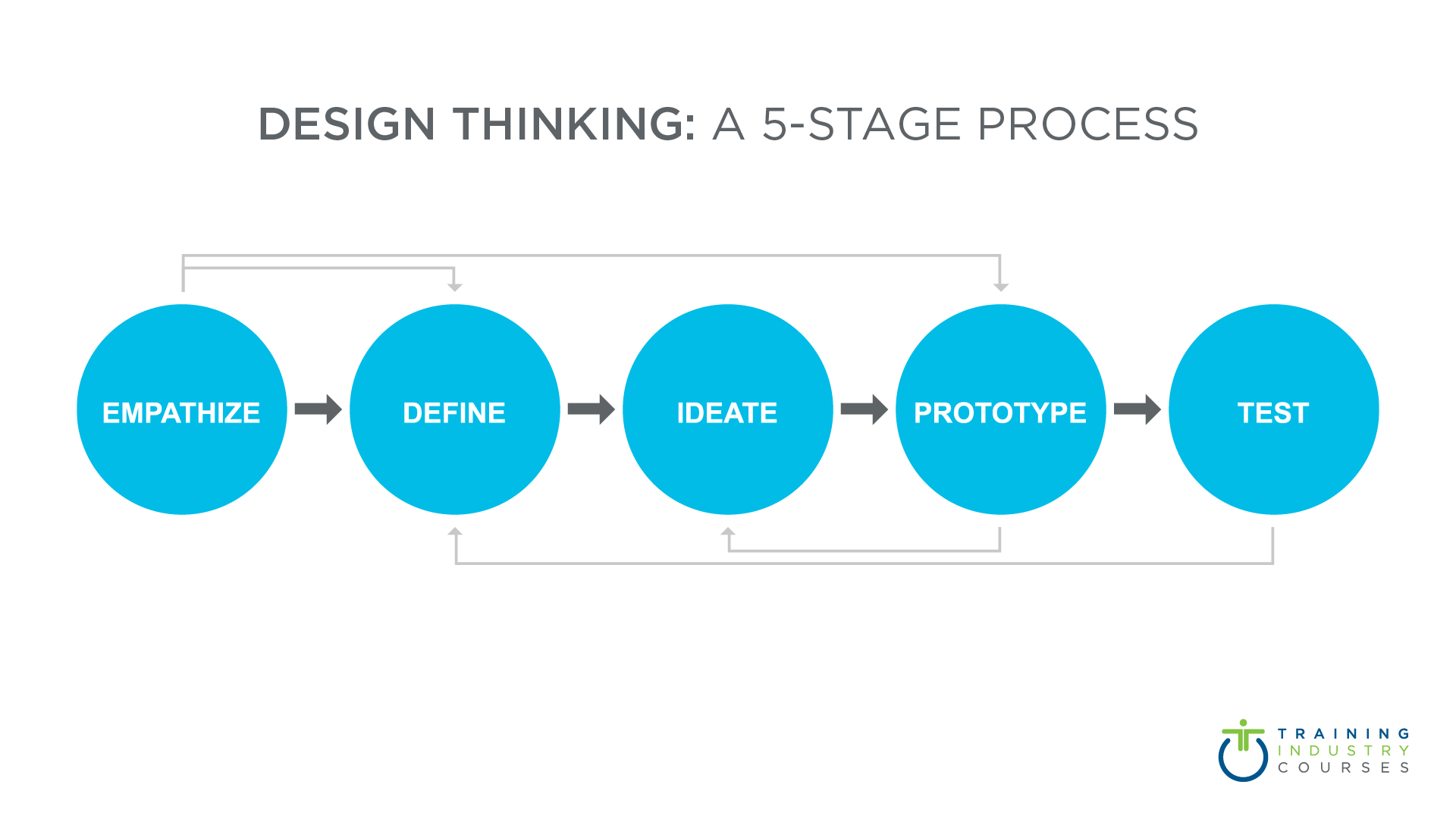What is Design Thinking?
Designers commonly use design thinking, a process for creative problem-solving, to create human-centric solutions. Organizations across industries are now adopting design thinking to find creative solutions to business problems. Applied to learning and development (L&D), this process has proven to be a fresh, innovative way to design and deliver impactful training initiatives.
The Hasso Plattner Institute of Design at Stanford University defines five stages of design thinking. The stages are listed below, along with an instructional design example.
The 5 Stages of Design Thinking
1. Empathize
Empathy is the foundation of human-centered design. To create effective learning solutions, L&D leaders must first understand who they’re creating them for: their learners. To empathize with learners and, therefore, deliver learning initiatives that will improve their performance, learning leaders should:
- Engage: Interact with, observe and interview users.
- Immerse: Walk in learners’ shoes; experience what they experience.
- Observe: View learners’ behavior in the context of their lives.
For example, let’s say the learners are retail associates who don’t have access to a desktop or laptop computer and can only consume training content during short breaks.
2. Define
In this phase, learning leaders reframe the problem they’re trying to solve to help create more innovative solutions. Defining the problem involves looking at it from the learners’ point of view to determine their unmet needs.
For example, the retail associates mentioned above might need content related to a new product the company is selling, and they need that content to be quickly and easily consumed on a mobile device.
3. Ideate
In the third phase of design thinking, the goal is not to determine the solution but to brainstorm as many possible solutions as possible. Learning leaders should communicate with a diverse group of stakeholders to develop a comprehensive list of solutions that captures as many viewpoints as possible.
For example, an instructional design team might come up with the following ideas for training retail associates on a new product:
- A five-minute video in which the product is demonstrated by people roleplaying as customers.
- An infographic that takes shows learners how to use the product step-by-step.
- A 500-word article that defines the product, explains why it was developed and shares the reasons why customers should buy it.
4. Prototype
This phase should happen as quickly and efficiently as possible, as the goal is not to create a perfect solution but to determine whether or not an idea solves the problem(s) at hand. High-resolution prototypes are costly and can delay projects.
For example, an instructional design team might create the video, infographic or article. When prototyping, it’s important not to spend too much time on any specific prototype, as they will not all be used, and to create the prototype with the user’s needs in mind, based on the insights gathered in earlier stages.
5. Test
The purpose of this phase is to gather feedback on the prototypes developed in the previous phase. Testing allows for fast feedback from learners, which is key in ensuring there’s enough time to make adjustments as needed.
For example, the training team might find that the retail associates in their test group don’t engage well with an article and can’t view the infographic clearly on their mobile devices, but they do enjoy the video and are able to apply what they learn in the video to their customer interactions. Based on this testing, the organization would then make any changes needed to the video and launch it company-wide.
By applying these five stages in the development and delivery of L&D solutions, learning leaders gain a deeper understanding of business problems and are better able to deliver innovative solutions that solve them.
Interested in learning more about design thinking? Register for the Design Thinking Workshop to begin your journey toward innovation at scale.
Related Resources:
- Course: Training Industry’s Design Thinking Workshop
- Breaking the Mold Through Design Thinking: A Modern Approach for Instructional Designers
- How to Use Design Thinking to Create Human-Centered Learning Solutions
To access the Design Thinking: A 5-Stage Process infographic, please fill out the form below:
